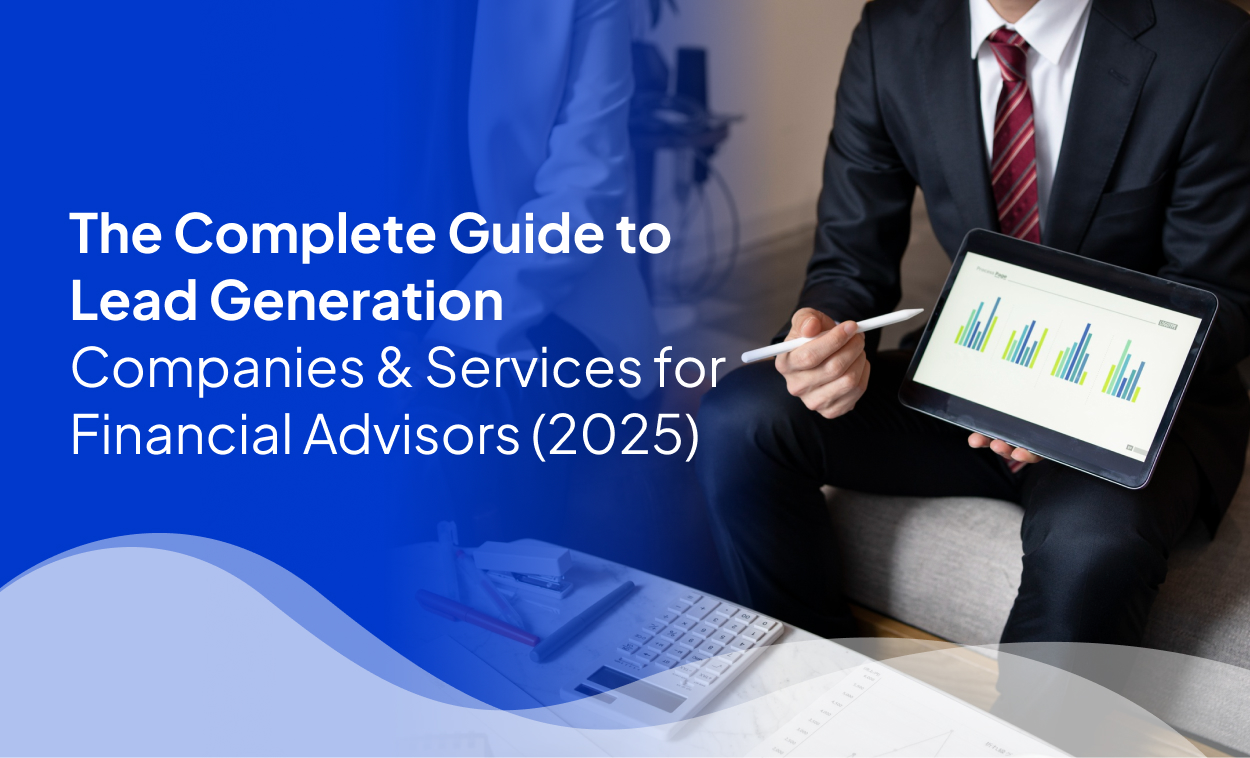
- Written & Reviewed by Jeremy
- Published
- Last Updated Oct 01, 2025
A financial advisor business plan is much more than a document it is a roadmap that defines your practice, clarifies your goals, and helps you serve the clients you love to work with while growing a sustainable, profitable business.
According to CEG Worldwide, 70% of top-earning financial advisors maintain both a formal business plan and a marketing plan. This statistic highlights the importance of planning, even if it alone does not guarantee success. Planning provides clarity, discipline, and structure, helping advisors make strategic decisions that lead to measurable outcomes.
This comprehensive guide will walk you through everything you need to build a successful financial advisor business plan, from identifying your target clients to defining operations, marketing strategies, and financial projections.
Why Every Financial Advisor Needs a Business Plan?
It’s possible to run a financial advisory practice without a formal business plan, but doing so can leave you vulnerable to inefficiencies, missed opportunities, and stagnating growth. A well-crafted business plan for a financial advisor allows you to:
Organize your business strategy: It gives you a clear roadmap for growth and operational excellence.
Identify gaps and opportunities: Evaluating your current practice helps pinpoint areas that need improvement.
Align your team: Staff and partners understand priorities, processes, and goals.
Measure success: With defined metrics and KPIs, you can track progress and make data-driven decisions.
Signs that your advisory practice needs a business plan include:
- Frequent unexecuted ideas for growth
- Abandoned or incomplete projects
- Low staff morale or high frustration
- Undefined goals or slow progress
- Stagnating or declining revenues
A written plan transforms intention into actionable steps, helping you focus on the initiatives that truly drive results.
Core Elements of a Financial Advisor Business Plan
A comprehensive business plan covers multiple aspects of your practice: your niche, services, marketing, operations, financials, and growth strategy.
1. Identify Your Ideal Clients (Niche)
Defining your target audience is the foundation of a successful advisory business. Focusing on a niche allows you to serve clients more effectively and differentiate your services from generalist advisors.
Research from Kitces.com shows that niche advisors earn significantly more:
- Top niche advisor: $660,000 average income
- Generalist advisor: $142,500 average income
Common niches include:
- Clients with a shared profession (doctors, lawyers)
- Clients with shared values (ESG investors, religious communities)
- Life-transition clients (divorcees, inheritors)
- Employees of specific companies or industries
- Other specific groups (e.g., travel-loving young families, retirees over 50)
- Your niche should reflect the clients you enjoy working with and those who value your expertise. A well-defined niche also allows you to craft targeted marketing and build repeatable processes.
Pro Tip: Use client personas to define age, income, profession, financial goals, and lifestyle preferences. This clarity helps you craft messaging and services tailored to their needs.
2. Define Your Services and Build Your Tech Stack (UVP + Technology)
Once your niche is clear, define your unique value proposition (UVP). This is the answer to the question: “Why should clients choose me over another advisor?”
Example UVPs include:
- Helping entrepreneurs manage both personal and business finances
- Guiding pre-retirees and retirees through Social Security, Medicare, and retirement income planning
- Holistic planning for engineers and technical professionals, including estate and stock option strategies
Building a Tech Stack to Support Your UVP
Technology is critical in delivering efficient, high-quality service. The three essential components of a financial advisor tech stack include:
- Customer Relationship Management (CRM) – For tracking client interactions and maintaining communication.
- Financial Planning Platform – Ideally with aggregation, client portals, and reporting capabilities.
- Portfolio Management Tool – To manage investments, performance reporting, and rebalancing. I have written a blog on top advisor marketing platforms, you must read that.
When choosing technology, consider:
Efficiency: Platforms should save time for both you and clients. Integration across tools reduces manual work.
Flexibility: Tech should support alternative fee structures and evolving client needs.
Comprehensiveness: Ensure the platform handles current and future planning needs, minimizing the need for multiple systems.
Pro Tip: Choose platforms that scale with your practice. A client-focused portal can increase engagement and retention, while portfolio automation ensures accuracy and efficiency.
3. Marketing Plan: Making Your Practice Known
In business plan for a financial advisor a marketing plan communicates your expertise, niche, and services to potential clients. Effective marketing includes:
- Setting clear objectives: Determine growth goals and capacity limits.
- Choosing the right channels: Social media, email campaigns, webinars, content marketing, seo for financial planner and referral programs.
- Defining success metrics: Track leads, booked meetings, and new clients acquired.
Pro Tip: In creating marketing plan for financial advisor allocate a specific amount of time weekly for marketing tasks. Consistency is more important than volume. Even creating two to four pieces of content weekly can generate meaningful engagement and leads.
4. Operations and Service Delivery
Operations define how your practice functions daily. Prioritize activities that drive the most impact using the “rocks, pebbles, and sand” approach:
- Rocks: High-priority, high-impact activities (financial planning, business development).
- Pebbles and Sand: Delegable or automatable tasks.
Streamline service delivery by:
- Creating a service calendar for client interactions
- Assigning clear roles to team members
- Automating repeatable processes wherever possible
Pro Tip: Regularly review workflows and look for tasks that can be outsourced or automated. Efficiency frees time for high-value activities.
5. Measuring Success: KPIs
Establish key performance indicators (KPIs) to track your progress. Metrics may include:
Assets under Management (AUM) growth
- Client acquisition and retention rates
- Net Promoter Score (NPS) and referral rates
- Operational efficiency metrics
KPIs ensure you stay accountable, evaluate the effectiveness of strategies, and identify areas that need improvement.
6. Business Plan for a Financial Advisor and Budgeting
A clear financial plan ensures your practice is profitable and sustainable. Key components include:
Budget: Include technology, insurance, marketing, and staff costs.
Revenue projections: Estimate income based on client fees and commissions.
Profitability analysis: Track expenses versus revenue regularly.
Annual review: Update projections and budgets to reflect growth or changes in the market.
Pro Tip: As your practice matures, incorporate succession planning and continuity strategies to ensure long-term stability.
7. Executive Summary, Company, and Industry Analysis
A full business plan may include additional sections:
- Executive Summary – Introduce your practice, mission, vision, and growth projections.
- Company Overview – Share your background, company structure, and any initial capital or investments.
- Industry Analysis – Outline market trends, growth forecasts, and competitors.
- Customer Analysis – Detailed profiles of your ideal clients and niche segments.
- Competitive Analysis – Highlight your differentiators, and analyze direct and indirect competitors.
- Management Team – Include education, background, and achievements of key team members.
Tips for Writing a Strong Financial Advisor Business Plan
Clarify Your Vision – Define long-term goals for 5, 10, or 20 years.
Set Specific Goals – Make objectives measurable with clear deadlines.
Prioritize and Delegate – Focus on high-impact tasks, and delegate or outsource the rest.
Track Your Progress – Use KPIs and benchmarks to monitor results.
Review and Revise Regularly – Business plans are living documents. Adjust quarterly, biannually, or annually.
Growing Your Advisory Business
Technology and remote advisory work allow you to expand your reach. Tools like SmartAsset AMP (Advisor Marketing Platform) automate marketing, lead generation, and client engagement. Additionally, serving clients remotely enables you to work with high-net-worth individuals beyond your local area, increasing growth potential.
Bottom Line
A financial advisor business plan provides the structure, clarity, and strategic insight needed to grow a successful practice. By defining your niche, services, operations, marketing, financials, and KPIs, you set your firm on a path toward sustainable growth, client satisfaction, and long-term success.
Remember: Planning is not a one-time task it’s an ongoing process that helps you adapt to changing market conditions, evolving client needs, and personal business goals. Also includes finding best targate markets for financial advisors.
Disclaimer:
This blog is intended for informational and educational purposes only and should not be construed as personalized financial, business, legal, or marketing advice. The strategies, statistics, and tools discussed are general in nature and may not be appropriate for every advisory practice, firm, or situation. All examples are illustrative and do not guarantee similar outcomes for every reader. Business planning, niche selection, tech platform choices, and marketing strategies should be carefully considered in the context of individual goals and circumstances.






